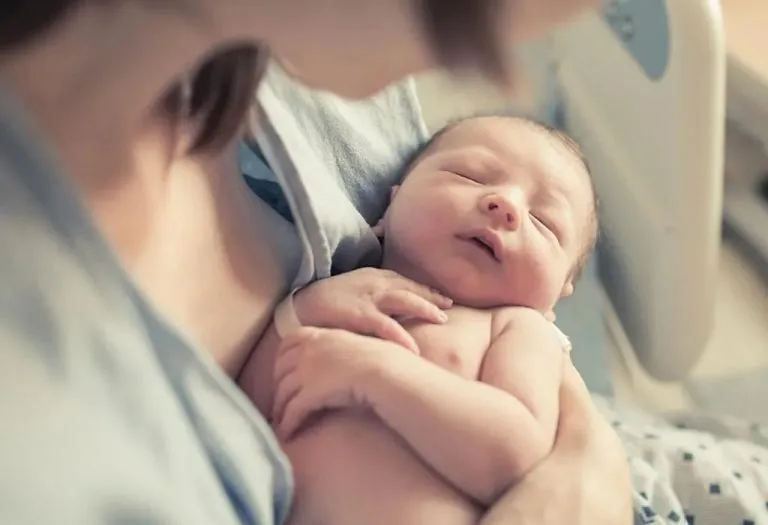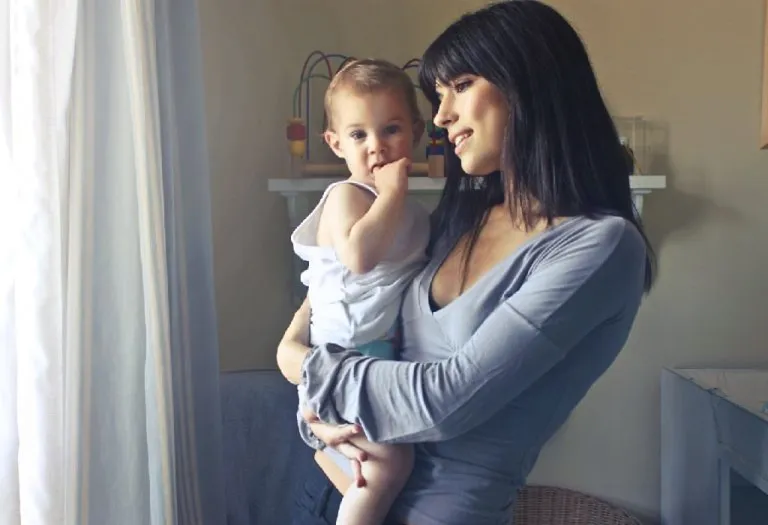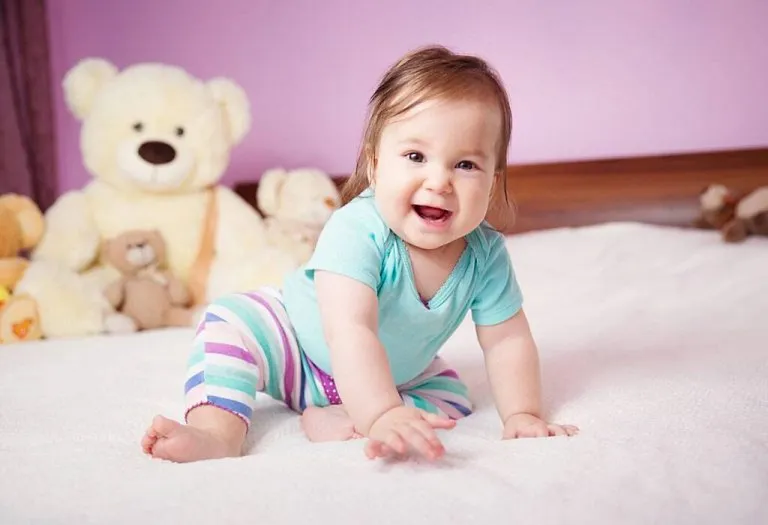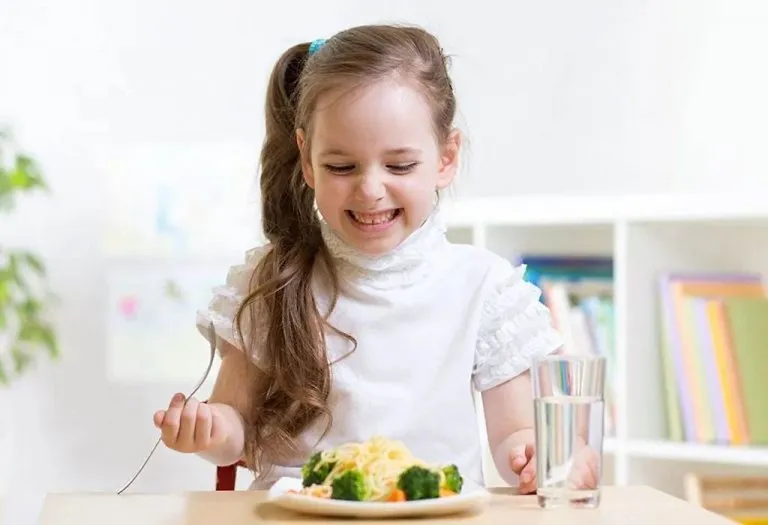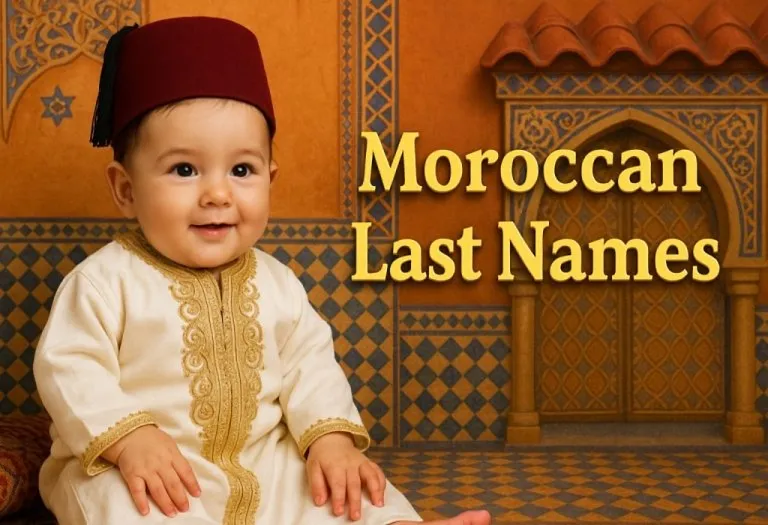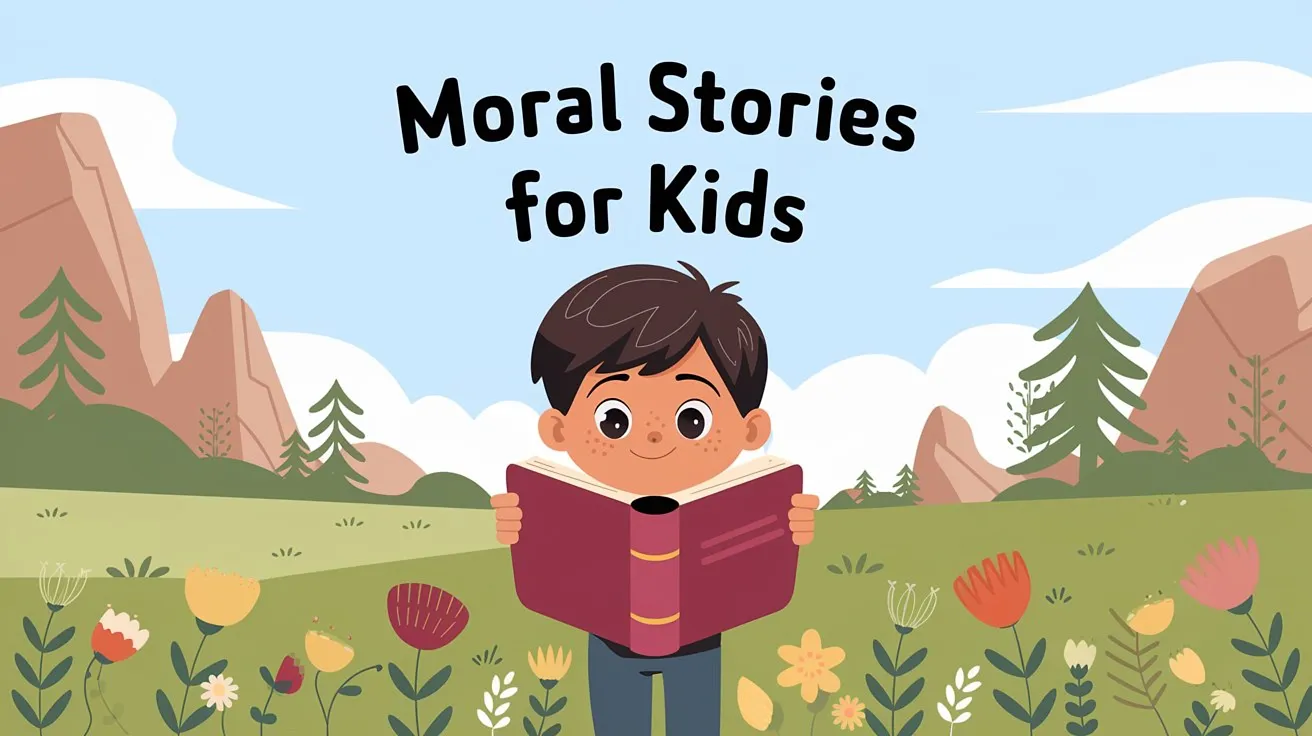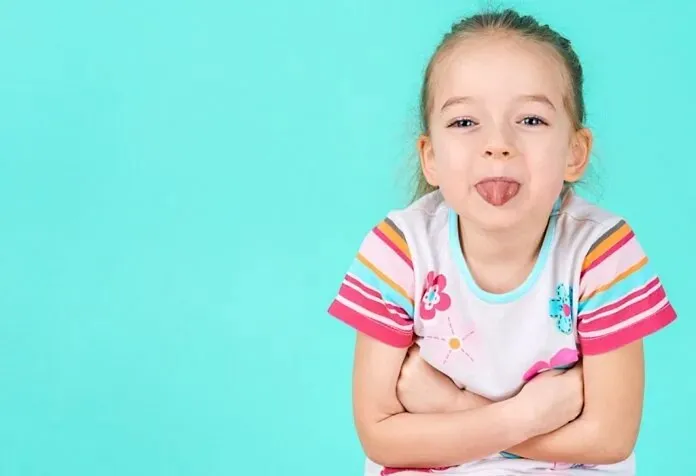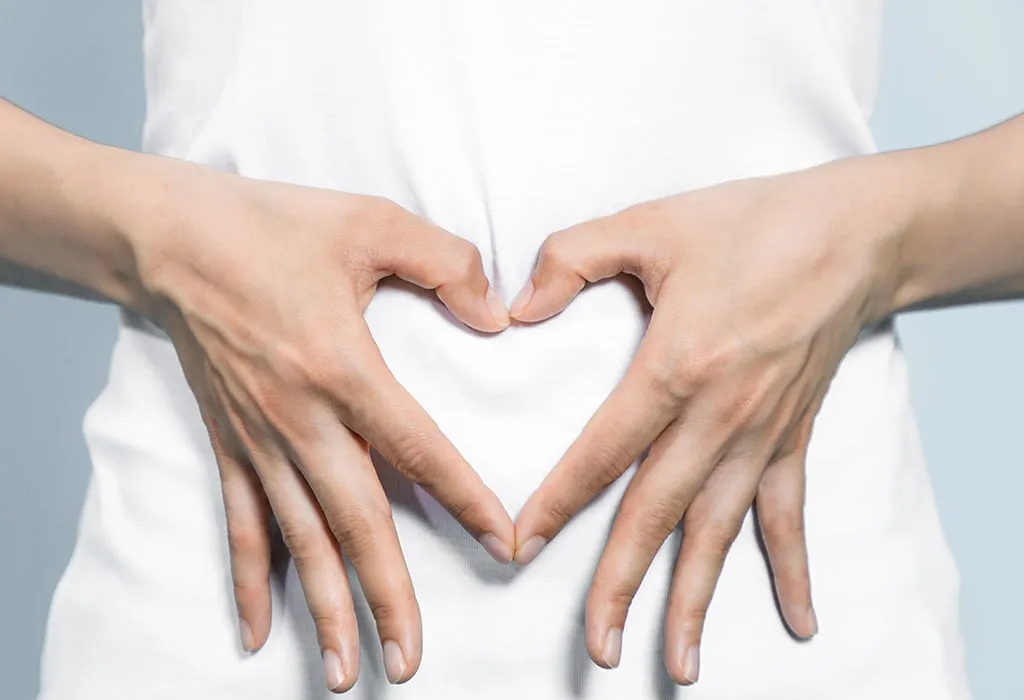What Will My Baby Look Like – Role of Genetics and Other Factors
We all have unique genetic identifiers that help us differentiate one person from another, be it the shape of our eyes, the length of our nose or the fullness of our lips. Each trait can become an individualised marker that people use to colour you. This, however, is not the case at birth. Genetics undoubtedly play a significant role in determining a child’s physical traits, from eye colour to hair texture and everything in between. However, the outcome is not solely dictated by the genetic blueprint inherited from parents; environmental influences during pregnancy and early childhood can also shape a child’s appearance.
Understanding these factors can offer insight into the mysteries of your future child’s appearance. However, the whole picture remains as unpredictable and enchanting as the journey of parenthood itself, leaving many parents eagerly asking, “What would my baby look like?”
What Your Baby Looks Like in the First Moment?
What a newborn looks like can completely differ from how the baby would look at a slightly more advanced age. The baby lacks fully developed genetic markers to help create unique identifiers. During the initial days, your baby will have a big head with a tiny torso, no neck, and small limbs. They eventually develop into normal proportions.
1. What Will Your Baby’s Head Be Like?
When they’re just born, all newborns have big heads. This changes with time as the body becomes more proportionate. With age, their brain, eyes, nose, cheeks, chin, and lips begin developing unique characteristics. The exact shape of your newborn’s head could be abnormal at the precise delivery moment, depending on the birth circumstance. For example, your baby could have a cone-shaped head if you had a standard vaginal delivery due to the amount of pressure spent in pushing through a vaginal birth; this could change if you had a C-section, and the baby’s head in this circumstance could be misshaped due to the tools used in assisting with the delivery. The good news is that the head itself morphs into a regular shape within the first week (6).
Often, babies have little soft spots on the skull, known as fontanelles. These fontanelles help your baby squeeze through the birth canal. There are two fontanelles commonly found in newborns:
- The smaller posterior fontanelle is triangular on the back of the baby’s head.
- The larger anterior fontanelle is found on the top of the baby’s head and is diamond-shaped.
2. Your Baby’s Private Parts
If you have a boy, he may have swollen testicles at birth. It is normal due to the pressure applied during delivery and the exposure to your hormones. If it is a girl, you may notice some vaginal bleeding, swollen breasts and white discharge from the nipples. Hormones cause all these and are entirely normal. Squeezing the discharge out of your body could cause an infection and hormonal imbalances.
3. Baby’s Face and Complexion
In the first moments, babies will have swollen eyes, faces, and pink lips, and their hands and legs can appear pale. All this is because the delivery of a child is a physically traumatic experience. The swollen eyes and face are indications of this trauma, while the white or blue palms and feet are due to the immature circulatory system, which depends on an external source of circulation when they used to reside in your belly.
The pink lips indicate maturing circulation, which means that in a few hours, your baby will have regular blood flow.
4. How Will Your Baby’s Legs Be?
As mentioned above, the baby’s arms and legs can be white or blue the moment after birth. However, blood circulation will return to normal within the next few hours, ensuring that the colour of the arms and legs returns to an average complexion.
Newborns have bow-shaped legs. This is because the development of the baby’s legs is morphed to let the baby grow in your womb. This will fix itself slowly over the next couple of years and look more like an adult’s leg shape when your child is two years old. If the gap between your child’s legs is too much or does not seem to be reduced, consult your primary care physician.
5. What Will Your Baby’s Skin Be Like?
The type of skin your baby has at birth varies depending on when it is born. This includes the thickness or the type of fluid covering it.
- Premature babies have a fine hair-like substance called lanugo that covers the skin in large quantities. They also have a white and greasy element called vernix covering the skin. This substance protects the skin from the mother’s amniotic fluid in the womb (7). The baby’s skin is almost transparent.
- Babies delivered on time usually have very little vernix on the body or in between the folds of their bodies right after delivery. They also have less lanugo than premature babies but more than babies delivered late.
- Babies delivered late may have a slightly wrinkled look to their skin; they also would have no lanugo covering their bodies and no vernix anywhere on their bodies.
Common Skin Marking in Newborn
Newborns often have various skin markings that are typically harmless and temporary. Here are some of the most common skin markings you might notice on your baby (1):
- Milia: Small white bumps that appear on a newborn’s nose, chin, or cheeks, caused by trapped skin flakes.
- Salmon Patches (Stork Bites): Pink or red marks are often seen on the back of the neck, eyelids, or between the eyebrows, usually fading as the child grows.
- Hemangiomas: Raised, bright red birthmarks made of blood vessels, often growing in size before eventually shrinking and fading over time.
- Port-Wine Stains: Dark red or purple marks caused by dilated blood vessels, usually permanent and sometimes associated with underlying health issues.
- Erythema Toxicum: A common rash in newborns, appearing as red spots with a yellow or white centre, typically resolving on its own within a few weeks.
- Slate Gray Macules: Flat, blue-grey spots often found on the lower back or buttocks are more common in babies with darker skin and usually fade by school age.
- Pustular Melanosis: Small, fluid-filled pustules that rupture and leave behind dark brown spots, more common in African American infants and usually disappear within a few weeks.
6. Will Your Newborn Baby Have Hair?
Whether a newborn has hair or not depends on the genetics of the parents and the mother’s hormones. A baby can be born with a full head of hair, or they can also be born bald. The hair your baby has at birth has extremely little to do with the kind of hair they will have later in life. Do not panic if your baby is born bald or begins to lose hair in the first six months; this is normal. Most babies will lose hair within the first six months after delivery.
7. What Will Your Newborn Baby’s Eyes Look Like?
Your baby is a mix of various genes. Contrary to popular belief, it isn’t only based on the baby’s parents; a newborn’s eyes can be inherited from any blood relative on either side of the family.
It is highly likely, however, that your baby will inherit either your eyes or your spouse’s eyes.
Factors Behind the Look of Your Baby
The important point is that your baby will inherit multiple physical attributes from various people within their gene pool and blood relatives. This is what makes them unique. Your child could inherit your spouse’s eyes, nose, father’s lips, mother’s ears, father-in-law’s forehead, etc.
Functionality of Genetics
Every human being has 46 chromosomes that make up our DNA, which consists of sixty to one hundred thousand genes. Most of these genes are inherited from our family. Your DNA is a practical guide to your roots; your genetic history can date back millennia. The function of genes is to help humanity evolve. Your genes can act like sponges, soaking up information and passing it on to your baby (2).
DNA or genetics are critical for human development and have polygenic features. This means they are not like other animals like fruit flies, where one dominant gene rules the structure and development of the body but instead works in unison with the nearly 64 trillion combinations of the 100 genes within our bodies. This makes humanity unpredictable and aids in the species’ quick development and evolution. Some sources say that most human traits and features are polygenic, with multiple combinations of genes providing a unique result. These include:
- Your baby’s height.
- Your baby’s metabolism.
- Your baby’s hair growth and colour.
- Your baby’s eyes.
What Will Your Child Look Like?
A significant part of genetics is how your DNA shapes your appearance. What makes your newborn unique is that all the combinations of their genes will help them grow and resemble their parents.
1. Eye Colour
Your baby’s eye colour is a polygenic trait. This means that even if both parents have dark brown eyes, your baby could still have light brown or green eyes. Don’t be alarmed if your baby has different eyes from either parent; this is rare but also considered a unique trait.
Eye colour determines how much brown pigment or melanin your baby inherits. If your baby has dark eyes, the melanin is high, whereas if they are blue, it is quite low. Other colours like hazel, emerald or shades of green have differing amounts of melanin.
The eye colour also depends on how the melanin is placed in your eyes and how close to the iris it is. The colour of the iris also depends on the melanin in your genes. The final consideration is how these numerous genes behave in a polygenic manner to give colour to your eyes.
2. Hair Colour
Similar to the eyes, hair is also a polygenic trait. Also, similar to the eyes, hair can, on rare occasions, be different from both parents due to the way these genes behave. It is entirely normal for a baby to have brown hair despite both parents having black hair. It is believed that dark hair is more common and dominant over lighter types of hair.
Your baby’s hair colour is usually a different shade from your partner’s and your hair colours; this, however, can differ on rare occasions. Your baby occasionally has a chance of having hair in your gene pool, but it hasn’t been seen for multiple generations. This is due to a dormant gene in one parent’s family called a recessive gene.
For example, if you have a recessive gene for red hair and your partner either has red hair or shares a similar recessive gene, then your baby could have red hair. If you both have different recessive genes for other colours, later, on rare occasions, your baby could have a tone that combines both.
3. Physical Features
Through the generations, your baby’s physical features are known to have filtered down and refined themselves. Genetically, your baby can inherit features like:
- A dimple
- Crooked teeth
- Hand and finger shape
- A prominent chin or other salient facial features
- Gap teeth
Examine family photographs to better understand your baby’s features. Similar features are usually found in one of the parents’ family trees.
4. Height
Genetics is unpredictable, and so is the height of your child. The most accepted calculation is the average height of both parents plus 2 inches for boys and minus 2 inches for girls; for example, if you are 5’8 and your partner is 5 feet tall, the average height is 5’4, so for a boy, the expected height would be 5’6 and a girl would be 5’2. However, there are external factors to this growth, like nutrition or predisposing conditions like asthma or diabetes. There is no foolproof method to predict your child’s height, as no equation is accurate.
5. Weight
This is a difficult thing to measure. Although genes play a part in weight gain or loss, it is impossible to tell if your child will be built in any particular manner. The risk of obesity is higher if one or both parents are obese, but other factors, like family eating habits or the child’s nutritional chart, play a much bigger role in the baby’s weight than genetics do.
6. Special Abilities
A child’s predisposed talent could be due to the abilities and skills of the parent. For instance, a child who has a parent who can throw a ball very far may also be able to do the same. This, however, is limited to the child’s exposure. For example, if a parent has a creative gene or has developed a skill like pottery, even if your child has a talent for it, they will need exposure and practice to hone it.
It is believed that talents can be developed by exposing children with genes to various activities early. With the right kind of encouragement and exposure, a child can replicate, if not develop, a skill without having the genes for it.
7. Will Baby Look Like Dad or Mom?
Your baby inherits genes from not just your partner or you but your entire family tree. If your child looks more like you than your partner, it means that your genes were predominantly inherited by the child and combined in a similar way that it did with you. Your baby can also wind up not looking like either of you despite inheriting genes predominant to one of you, as the combination of polygenic traits could behave differently (3).
There is no concrete equation on who your baby will take after.
FAQs
1. Can we influence any traits of our baby during pregnancy?
While you cannot change your baby’s genetic makeup, you can influence some aspects of development through lifestyle choices during pregnancy. Ensuring proper nutrition, avoiding harmful substances, and maintaining good prenatal care can promote healthy growth. However, the fundamental genetic traits are determined at conception and cannot be altered by environmental factors alone.
2. What role does ethnicity play in determining my baby’s appearance?
Ethnicity can significantly influence certain physical characteristics, such as skin tone, hair texture, and facial features. These traits have evolved over generations and are more prevalent in certain ethnic groups due to genetic adaptations to different environments. Mixed-ethnicity children often inherit a blend of these features from both parents.
3. Can my baby inherit traits from grandparents or other relatives?
Yes, your baby can inherit traits from grandparents or even further back in the family lineage. Genes can be passed down through generations, sometimes skipping one or more, which means your child might resemble a grandparent or have features that are not visible to the parents (5).
4. Are personality traits and intelligence inherited too?
It’s worth noting that genetics also influence personality traits and intelligence. However, these traits are shaped by genetic predispositions and environmental factors, such as upbringing, education, and life experiences. The interplay between genes and environment makes each individual’s personality and intellectual capabilities unique (4).
How will my baby look? This question blends the fascinating science of genetics with the mystery of individual variation. Each child inherits a unique combination of traits from their parents, influenced by both hereditary factors and environmental conditions. While human genes are complicated and hard to predict, they still play an immense part in your child’s life.
References/Resources:
1. How Your Newborn Looks; American Academy of Pediatrics; https://www.healthychildren.org/English/ages-stages/baby/Pages/How-Your-Newborn-Looks.aspx
2. Genetics; Nemours KidsHealth; https://kidshealth.org/en/parents/about-genetics.html
3. Alani. E; Why do babies get their parents features?; Cornell Center for Materials Research; https://www.ccmr.cornell.edu/faqs/why-do-babies-get-their-parents-features/
4. Plomin. R, Deary. I. J; Genetics and intelligence differences: five special findings; PubMed Central; https://www.ncbi.nlm.nih.gov/pmc/articles/PMC4270739/
5. Sumarroca. M; How much DNA do you inherit from each grandparent?; The Tech Interactive; https://www.thetech.org/ask-a-geneticist/articles/2020/how-much-dna-do-you-share-grandparents/#
6. Jana. L, Shu. J; Your Baby’s Head; American Academy of Pediatrics; https://www.healthychildren.org/English/ages-stages/baby/Pages/Your-Babys-Head.aspx#
7. Getting to Know Your Newborn; Nemours KidsHealth; https://kidshealth.org/en/parents/newborn-variations.html
Also Read:
Signs of Intelligent Baby
Know Your Baby’s Personality Based on Birth Month
Newborn Baby Care Tips Immediately After the Birth
Signs of a Healthy Baby That Every Parent Must Know
What Your Baby’s Day of Birth Predicts About His/Her Personality
Was This Article Helpful?
Parenting is a huge responsibility, for you as a caregiver, but also for us as a parenting content platform. We understand that and take our responsibility of creating credible content seriously. FirstCry Parenting articles are written and published only after extensive research using factually sound references to deliver quality content that is accurate, validated by experts, and completely reliable. To understand how we go about creating content that is credible, read our editorial policy here.





